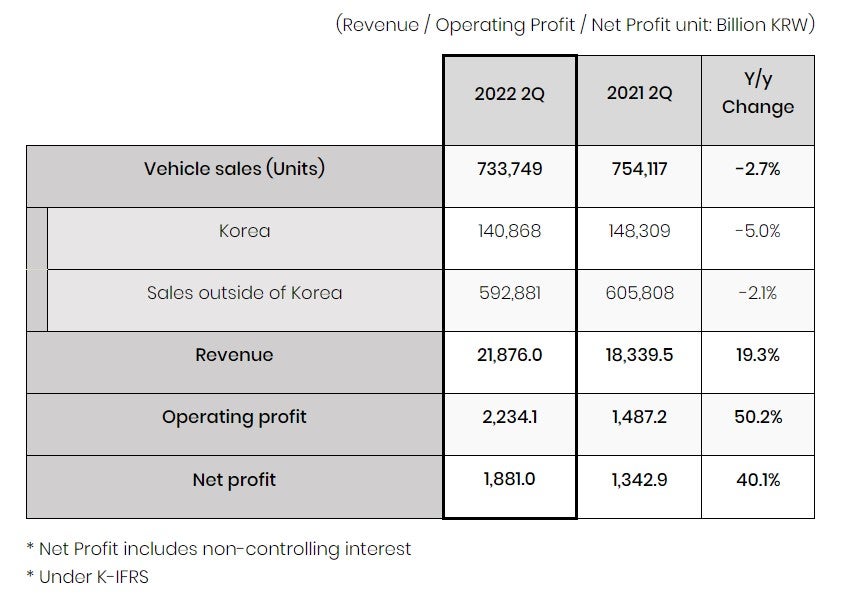
Hyundai Motor Group’s Kia Corporation has announced a strong set of second quarter business results.
Kia’s second quarter operating profit increased by 50 percent to KRW 2.23 trillion from KRW 1.49 trillion a year earlier, with an operating profit margin of 10.2 percent. The company also recorded a net profit (including non-controlling interests) of KRW 1.88 trillion, a 40 percent increase from a year earlier.
Q2 revenues were up 19.3% despite a drop to unit sales.

Kia said the strong performance was supported by Kia’s enhanced product mix. With the success of the brand’s higher-margin RV models, such as the Sportage, RV sales accounted for a record-high 65 percent of overall vehicle sales. Also, Kia’s efforts to cut down on incentives, and the favourable foreign exchange environment (week won, which also boosted sister brand Hyundai) further enhanced profitability.
The strong financials came in spite of lower unit sales due to supply shortages (part of the global semiconductors shortage).
Between April and June 2022, Kia sold 733,749 units across global markets, a 2.7 percent decrease compared to the same period last year. Sales outside of Korea recorded a 2.1 percent decrease to 592,881 units. Kia’s Korean market sales witnessed a 5 percent decrease compared to a year earlier due to the production disruption stemming from the parts shortage.

US Tariffs are shifting - will you react or anticipate?
Don’t let policy changes catch you off guard. Stay proactive with real-time data and expert analysis.
By GlobalDataFor the second quarter, Kia recorded retail sales of 133,000 electrified vehicles, accounting for 17.7 percent of overall sales which is an 8.7 percentage point increase from year earlier. Of the electrified vehicle sales, retail sales of BEV models accounted for 44,000 units, a 98 percent increase year-on-year.
In the long term, Kia aims to achieve annual sales of 1.2 million units of BEVs by 2030.
Kia also said it expects the global semiconductor shortage to gradually improve.



